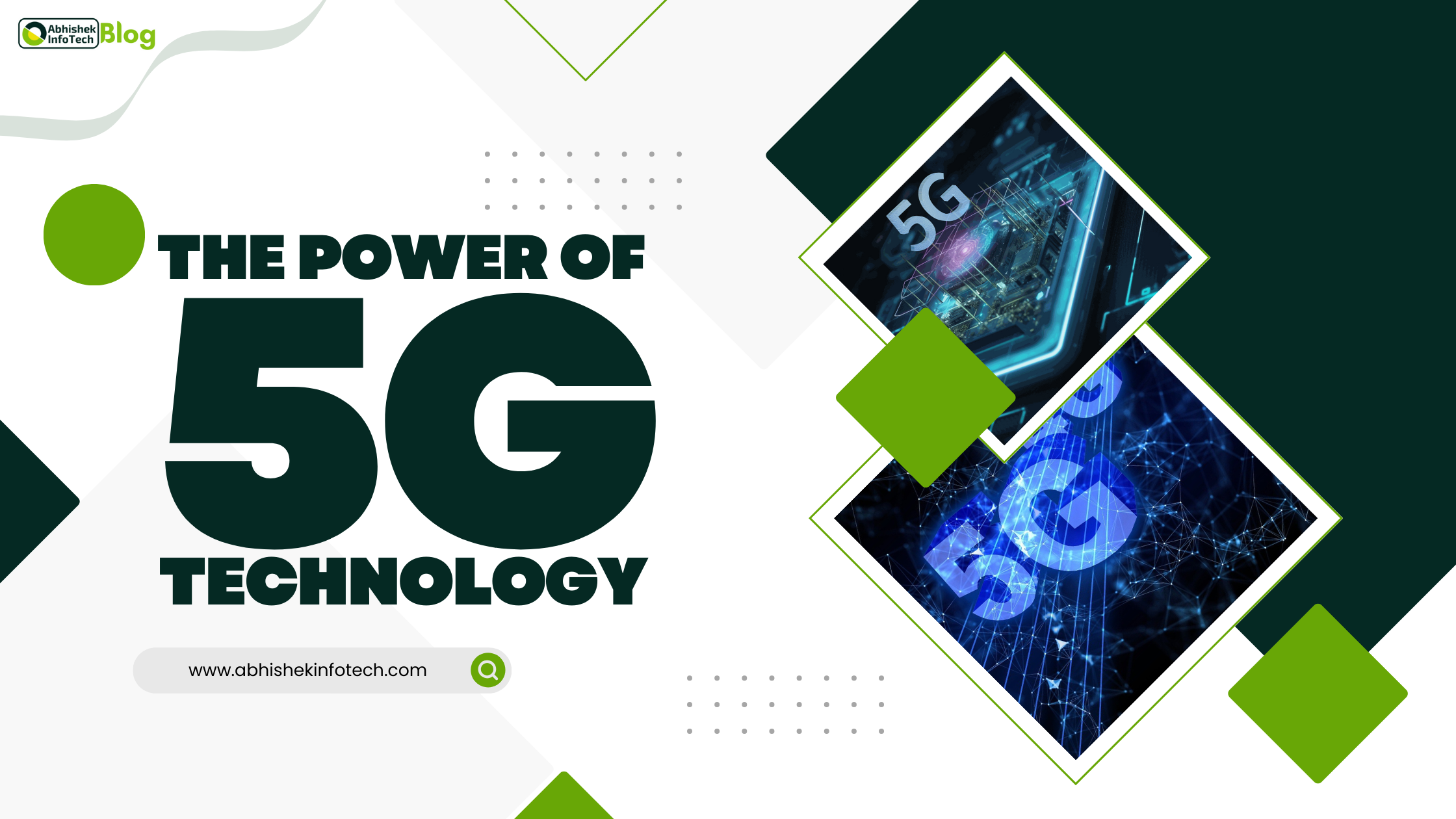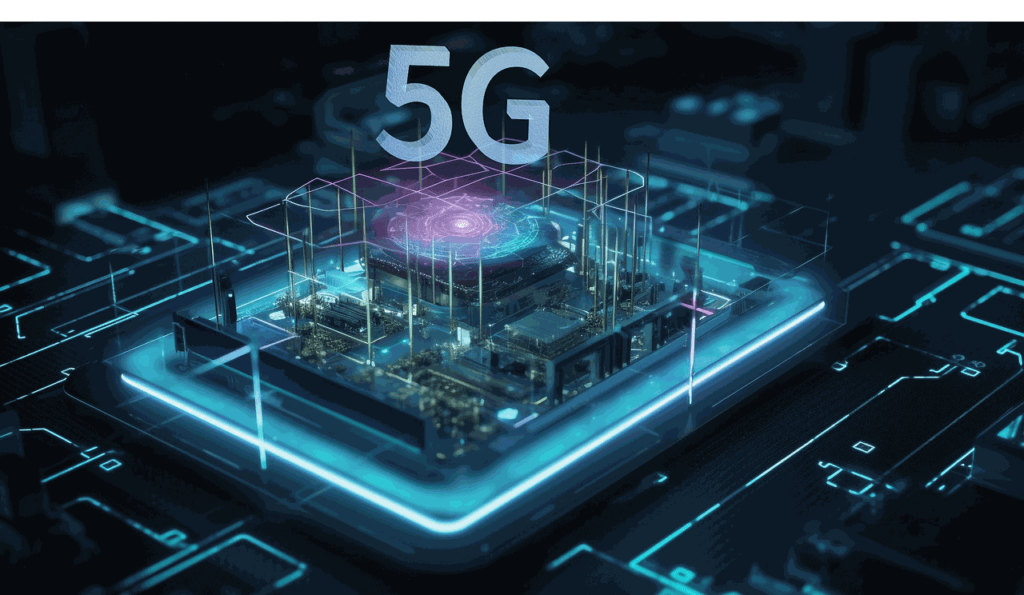5G Technology: Everything You Need to Know About the Next Generation of Wireless Technology

How Is 5G Technology Transforming Communication And Shaping The Future Of Connectivity?
Technology has always evolved by pushing restrictions and offering up new opportunities. The development of 5G technology has radically altered how we interact and communicate in recent years. While 4G’s predecessor gave us quicker internet connections and better mobile connectivity, 5G raises the bar. This article covers 5G’s effects on communication, the Internet of Things (IoT), autonomous vehicles, and the future of connection.
Capabilities and Impact on Communication
5G technology has an immediate and noticeable effect on communication. 5G promises lightning-fast internet speeds, reduced latency, and improved network reliability. We can expect seamless video calls, high-quality video streaming, and lag-free online gaming, even in crowded places.
Imagine conducting a video conference call with colleagues or loved ones without any buffering or pixelation. 5G’s increased bandwidth and speed will make this a reality. Moreover, the reduced latency of 5G networks means that real-time communication will be incredibly responsive, facilitating applications like remote surgery and augmented reality (AR) experiences.
IoT Revolution
In the Internet of Things (IoT), commonplace items are linked to the Internet, sharing information, and cooperating to improve our quality of life. Making this vision a reality will require 5G in a big way. Because 5G can link several devices at once, IoT devices can interact with it without any issues.
Numerous industries, including smart cities, agriculture, healthcare, and logistics, will be significantly impacted by this. Smart cities offer raised safety for everyone, energy conservation, and real-time traffic monitoring. IoT devices used for farming may gather data to increase agricultural yields and decrease resource waste.
In the medical field, timely availability of medical data and monitoring of patients from afar can save lives. By providing the essential infrastructure for Internet of Things (IoT) gadgets to thrive, 5G technology lays the door for these breakthroughs.
Autonomous Vehicles and Transportation
Autonomous vehicles are the way of the future of transportation, and 5G is the force behind this transition. Decisions have to be made in a split second, and infrastructure as well as cars must be communicated with instantly. Self-driving vehicles need 5G’s low latency and enormous bandwidth to operate efficiently and securely on the road.
With 5G, vehicles can communicate with each other and with traffic signals, enabling them to make informed decisions in real-time. This technology is not only poised to reduce traffic accidents but also promises to make transportation more efficient, reducing congestion and pollution in our cities.
The Future of Connectivity
The impact of 5G extends far beyond our smartphones and connected devices. It lays the foundation for the future of connectivity, where virtually everything is linked and empowered by the internet. Beyond the applications mentioned earlier, 5G will empower industries like manufacturing, education, and entertainment in ways we can only begin to imagine.
The Industrial Internet of Things (IIoT), enabled by 5G, has the potential to create more intelligent factories with equipment capable of diagnosing problems and ordering new components, cutting costs and downtime.

Due to the possibilities of 5G for virtual reality and augmented reality applications, distance education in the educational setting will become more immersive and engaging. With 8K streaming and lag-free online gaming, 5G can bring immersive experiences in media unlike anything seen before.
Internet and Connectivity of 5G Technology
The internet has blended seamlessly into every day in our highly interconnected society. It influences the way we learn, communicate, work, and play. The complicated environment of internet infrastructure, 5G technology, and ongoing discussions about neutrality on the internet, however, exists below the surface of this digital world. We’ll examine these crucial facets of connection and the web in this essay, as well as the difficulties that exist for worldwide connectivity.
Internet Infrastructure: The Backbone of Digital Connectivity
A vast and complex network of infrastructure serves as the Internet’s structural backbone. Data centers, fiber optic cables, satellites, and networking routers make up the infrastructure’s supporting structures. In data centers, enormous amounts of data are processed and stored, while fiber optic cables and satellites enable high-speed data transit across continents and seas.
As the demand for faster and more reliable connectivity grows, the expansion and maintenance of this infrastructure become paramount. The development of new technologies, like 5G, is a testament to our unending quest for better internet connectivity.
5G Technology: A Game Changer for Connectivity
Internet connectivity has advanced significantly with the introduction of 5G technology. It claims to connect more devices at once and deliver faster bandwidth and lower latency. Using bandwidth-intensive applications, streaming high-definition films, and downloading huge files will all be smooth experiences with 5G.
Additionally, 5G technology will make it possible for various networked devices to effectively communicate with one another, enabling the Internet of Things (IoT) to reach its full potential. By simplifying processes and boosting service standards, this has the potential to revolutionize industries including healthcare, transportation, and manufacturing.
Net Neutrality: Ensuring an Open Internet
Net neutrality is a hotly debated topic in the world of internet policy. At its core, it’s the principle that internet service providers (ISPs) should treat all data on the internet equally, without discrimination or preference. Net neutrality ensures that ISPs don’t block or throttle access to certain websites or services while prioritizing others.

The concept of net neutrality safeguards a free and open internet where users have equal access to information and services. Advocates argue that without net neutrality, ISPs could potentially control what content users can access, potentially stifling competition and limiting online freedom.
Challenges of Global Connectivity
Despite the advancements in internet infrastructure and technologies like 5G, global connectivity still faces several challenges:
- Access Disparities: Not everyone around the world has equal access to the internet. Rural and remote areas often lack the necessary infrastructure, leaving residents with limited connectivity options.
- Digital Divide: Socioeconomic disparities impact Internet access. A digital gap that limits educational and professional prospects may be caused by lower-income people and communities’ inability to purchase high-speed internet.
- Security Concerns: Threats to cybersecurity are on the rise as a result of our increasing reliance on the internet. Data, privacy, and crucial infrastructure must all be protected from threats.
- Regulatory Complexities: Navigating the regulatory landscape of the global internet is complex. Different countries have varying laws and regulations regarding data privacy, content censorship, and online freedoms.
Overview of 5G Technology and Internet and Connectivity
Our digital era is centered on the internet and connection. It’s critical to comprehend the complexity of internet infrastructure, the possibilities of 5G technology, the value of net neutrality, and the difficulties associated with global connection. Addressing these issues and providing fair access to the digital world will continue to be a key concern in the changing connectivity environment as we continue to depend more and more on the internet.
The introduction of 5G technology represents a paradigm leap in how we connect, communicate, and live rather than merely a minor advancement. It significantly affects networking, the Internet of Things, autonomous vehicles, and communication. Our devices, cities, and industries will become smarter and more linked than ever before as we enter a transformational era. As 5G networks spread around the world, we could be looking forward to a time when possibilities are nearly endless and our lives, careers, and recreational pursuits will all be irrevocably changed.



